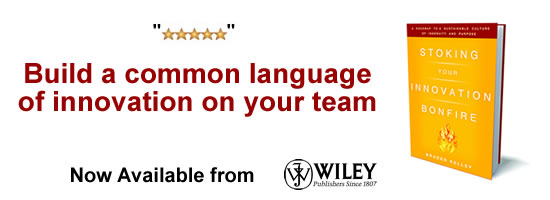Eleven Essential Behavioral Science Books for Innovators

No matter how great an innovation is, it is only useful if people notice it, understand it, desire it, acquire it and use (and reuse) it. To achieve this, we need to understand human perception, motivations, decision making and ultimately, influence behavior. Below, in no particular order, are my favorite eleven books that have taught me about human behavior. Why eleven and not ten? Because as innovators, I think we should always challenge convention, and in the immortal words of Spinal Tap’s Nigel Tufnell, “why settle for ten when you can have elevenâ€.
1. Thinking Fast and Slow by Daniel Kahneman
This terrific book from the father of Behavioral Economics is essential reading for anyone interested in the Behavioral Sciences, or human behavior in general. It masterfully describes how the model of System 1 and System 2 thinking explains the differences between how we often believe we make decisions, and what we actually end up doing. It is a tour de force of insight, clear narrative and illuminating examples. Â
2. How the Mind Works by Steven Pinker
A masterful book from one of the world’s great intellects and writers. It’s beautifully written, witty, and sometimes outright funny, and guides us with clarity and simplicity through topics that have previously been shrouded in complexity. How the mind works is a huge topic to cover in a single book, and Pinker, while not explaining absolutely everything, does explain an awful lot.
3. Predictably Irrational by Dan Ariely
This is one of my all time favorites. Dan has a gift for communicating complex ideas in a very entertaining and accessible way, and it shines through in this, and his subsequent books. The core idea is how the speed provided by Daniel Kahneman’s System 1 thinking can sometimes result in surprisingly odd behavior. But, it also explains that once we understand the consistent mental shorts cuts associated with this seemingly irrational behavior, we can both predict, and design products and services that nudge people towards smarter actions.
4. Drive by Dan Pink
This is about what motivates us, and how autonomy, mastery and purpose drive peak performance. It describes how intrinsic motivation and internal satisfaction, the pleasure we get from solving little puzzles, and a sense of purpose drive behavior. As such, it is essential reading for anyone trying to build a motivated, innovation friendly culture.
5. Made to Stick by Chip and Dan Heath
An engaging book that explores what makes some ideas more effective than others, and what makes concepts and ideas spread. This is not a new book, but true to its title, the insights it contains have stuck in my head longer than any other book about creating and spreading compelling ideas, concepts and memes.
6. How Brands Grow Part Two by Byron Sharpe
I passionately believe that communication is an essential, and often underestimated element of innovation. People need to understand and desire innovations if they are going to have a chance to succeed. This book brings science to marketing, in a way that appealed to me, and that I suspect will appeal to a lot of innovators. It turns solid, replicated data into ‘laws’ that can be applied to branding, and to marketing strategy in general. In so doing, it dispels a few myths about loyalty, and how deeply involved consumers are with brands. Insights that are consistent with the System 1 and 2 models of decision making in Kahnenan’s model. In my opinion, ‘part two’ doesn’t add much to ‘part one’, but if you haven’t read that, I’d jump straight to this, as it revisits nearly everything covered in the first book, and updates it.
7. Visual Intelligence by Don Hoffman
New innovations must be noticed in order to succeed. However, how visual attention really works, and what does and doesn’t grab can be quite surprising and counter intuitive. Our visual system evolved in a very different world to the one we live in, and so is optimized for solving some different problems to the ones we face when we shop online, in the high street or in the supermarket. Much as Dan Ariely’s book Predictably Irrational provides insights that can help us better understand and nudge people’s decisions, Don’s book provides a framework for understanding, and potentially nudging visual attention. That is something that is priceless for effective visual design.
8. See What I’m Saying by Larry Rosenblum
Vision is of course not the only sense that influences what we notice. In this book, Larry explores the often surprising abilities of our five senses, and how they work together, often below the threshold of our awareness, to help us navigate the world. An accessible read full of fun examples, the insights on multisensory integration provide all sorts of opportunities to design innovations that grab attention, perform more effectively and intuitively, and that people will desire and use repeatedly. Our default is to often think in only one sensory mode, but in reality it is integrated mixtures of sensory input that nearly always drive behavior. Food, for example, is not just about taste, but also smell, texture, visual appeal and even the sound it makes when we eat. .
9. Smart Thinking by Art Markman
Art provides practical, clear and simple advice for how to develop smart habits, acquire knowledge, and apply that knowledge effectively. His insights are anchored in sold cognitive science, but presented in an accessible, readable, and useful form. This makes for essential reading for better understanding both our personal and business lives, but also how the people we invent for think and make decisions.
10. The Pirates Dilemma by Matt Mason
On the face of it, piracy may not sound like a great business model for innovation. But Matt’s examples of punk capitalism provide practical insights that suggest ‘piracy’ can be a model for disruptive Innovation, and also act as a signal for unmet consumer need, and hence, highlight potential opportunity spaces for innovation.
11. Biomimicry by Janine Benyus
Whatever innovation challenge we face, be it technical, communication, or system based, the odds are that nature has already solved it. 3.8 billion years of R&D and Innovation leaves little room for omission. It also provides insight into what solutions work really well, as these high efficacy options tend to pop up multiple times via different evolutionary routes. Janine’s landmark book encourages us to tap into existing solutions in nature to create breakthrough, and often sustainable innovations. To be fair, the hardest part of this kind of analogy based innovation often lies in finding the insights amid the mind boggling diverse information inherent in 3.8 billion years of innovation. But the potential is there.
Wait! Before you go…
Choose how you want the latest innovation content delivered to you:
- Daily — RSS Feed — Email — Twitter — Facebook — Linkedin Today
- Weekly — Email Newsletter — Free Magazine — Linkedin Group
 A twenty-five year Procter & Gamble veteran, Pete Foley has spent the last 8+ years applying insights from psychology and behavioral science to innovation, product design, and brand communication. He spent 17 years as a serial innovator, creating novel products, perfume delivery systems, cleaning technologies, devices and many other consumer-centric innovations, resulting in well over 100 granted or published patents. Follow him @foley_pete
A twenty-five year Procter & Gamble veteran, Pete Foley has spent the last 8+ years applying insights from psychology and behavioral science to innovation, product design, and brand communication. He spent 17 years as a serial innovator, creating novel products, perfume delivery systems, cleaning technologies, devices and many other consumer-centric innovations, resulting in well over 100 granted or published patents. Follow him @foley_pete
NEVER MISS ANOTHER NEWSLETTER!
LATEST BLOGS
Three things you didn’t know about credit cards
Photo by Ales Nesetril on Unsplash Many of us use credit cards regularly. From using them for everyday purchases to…
Read MoreFive CV skills of a business-minded individual
Photo by Scott Graham on Unsplash The skills listed on a CV help employers quickly understand your suitability for a…
Read More


